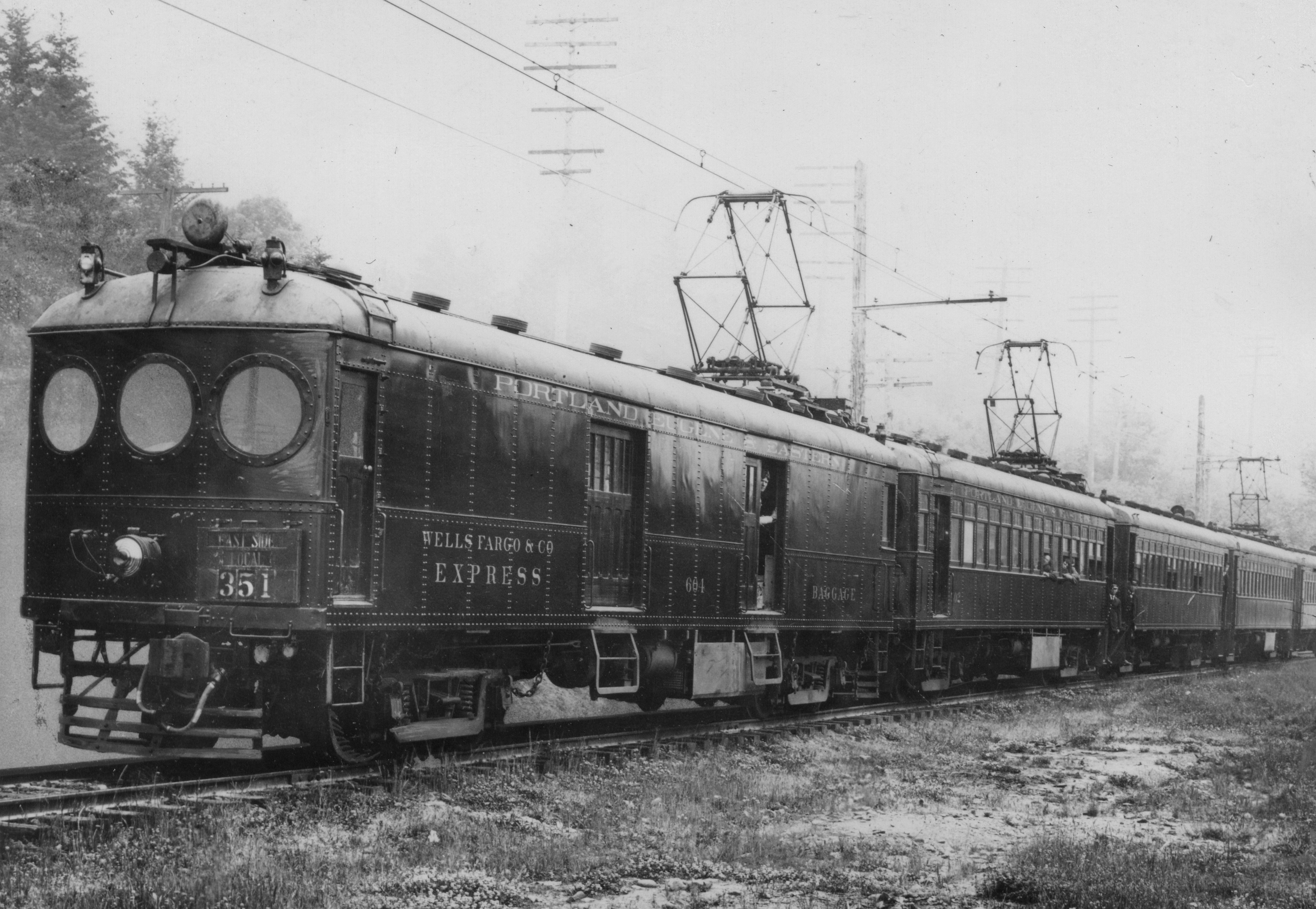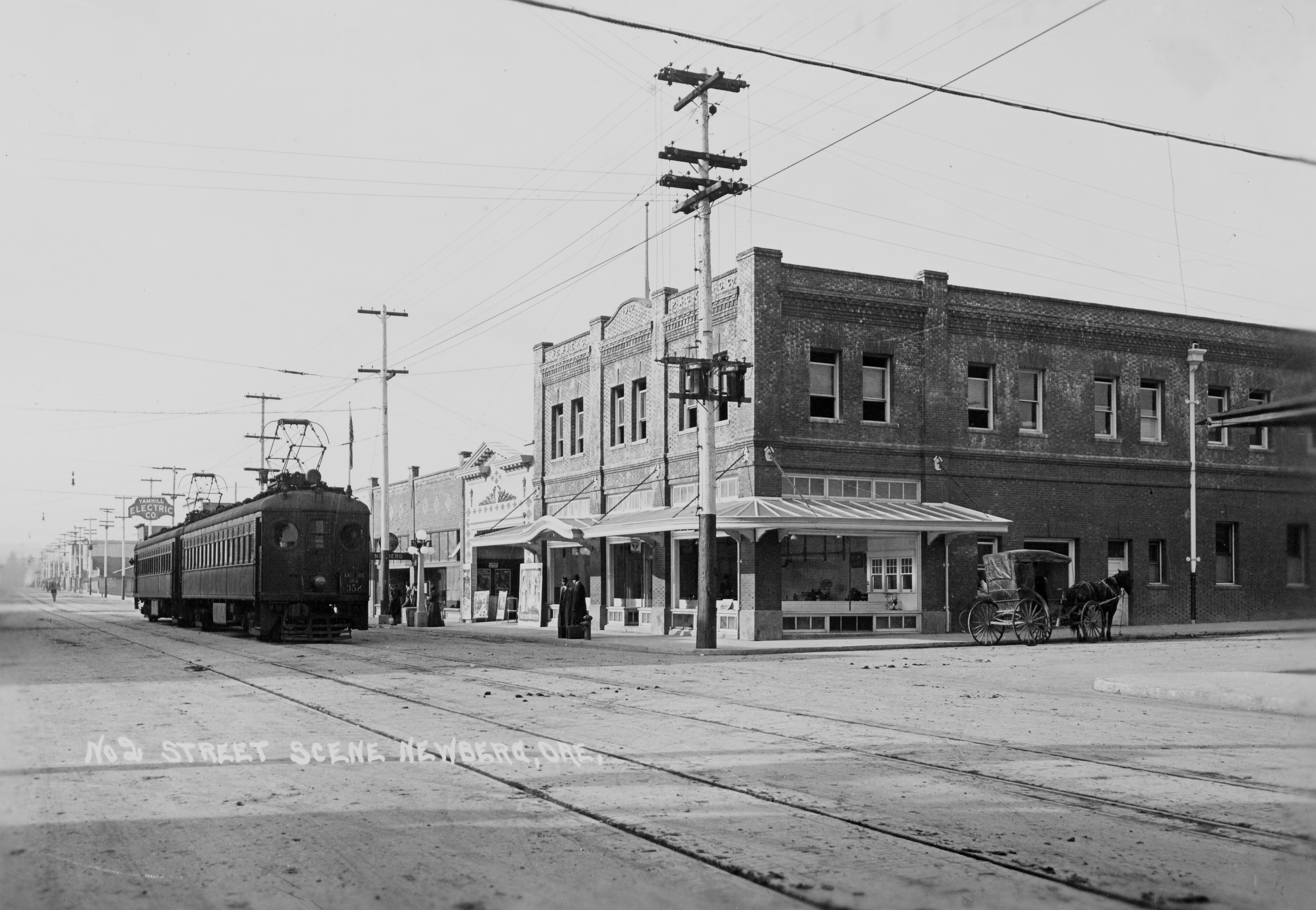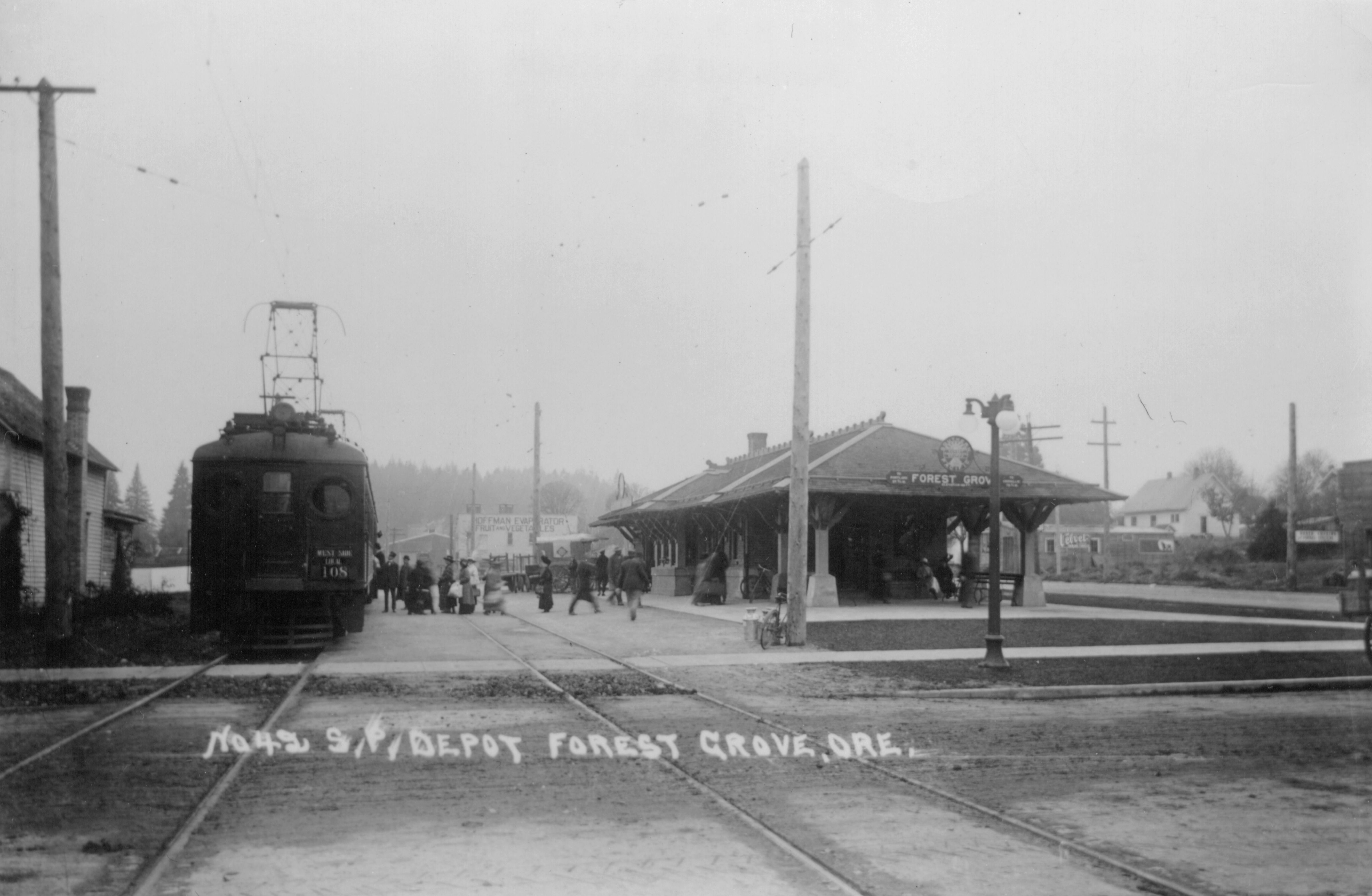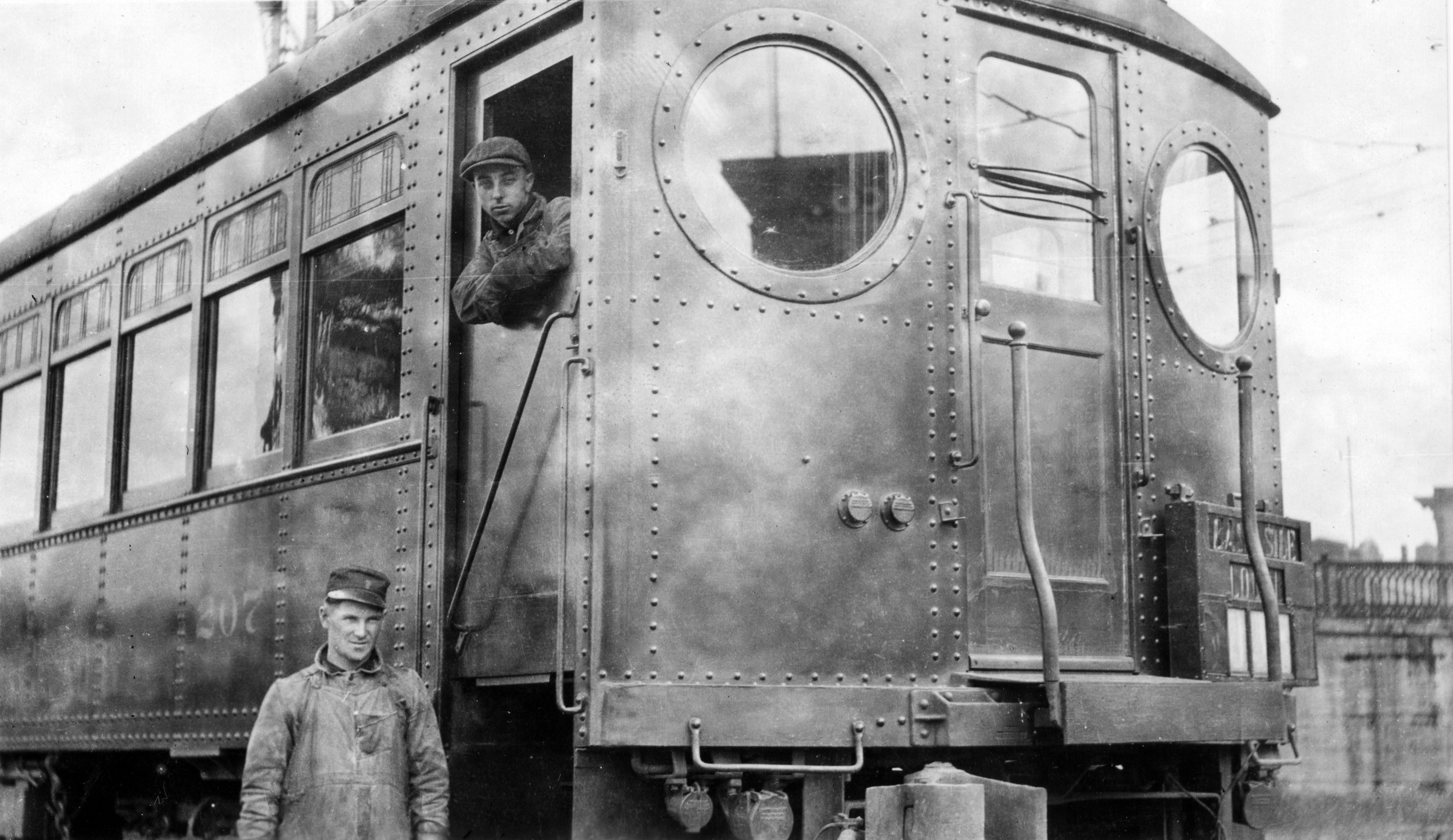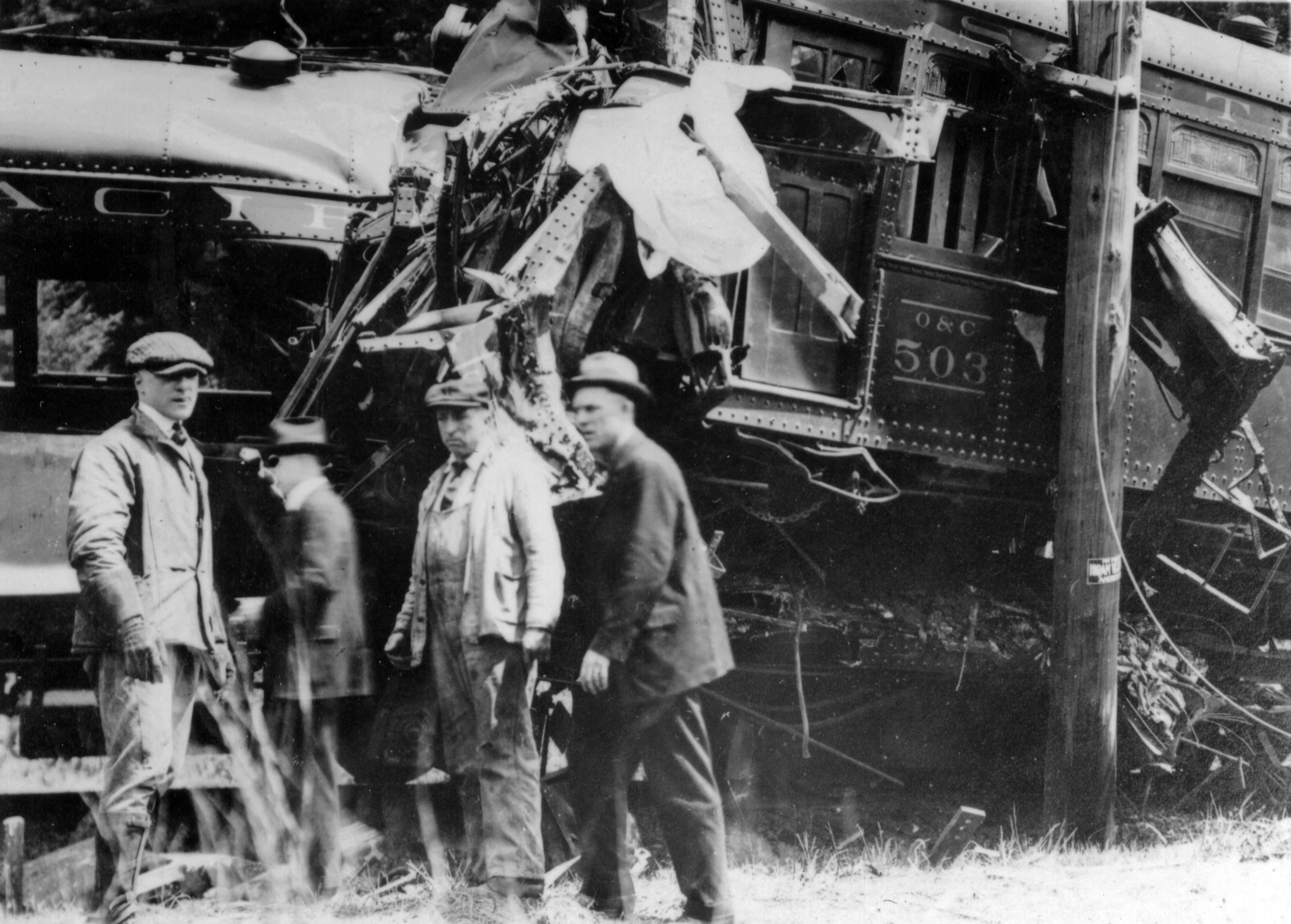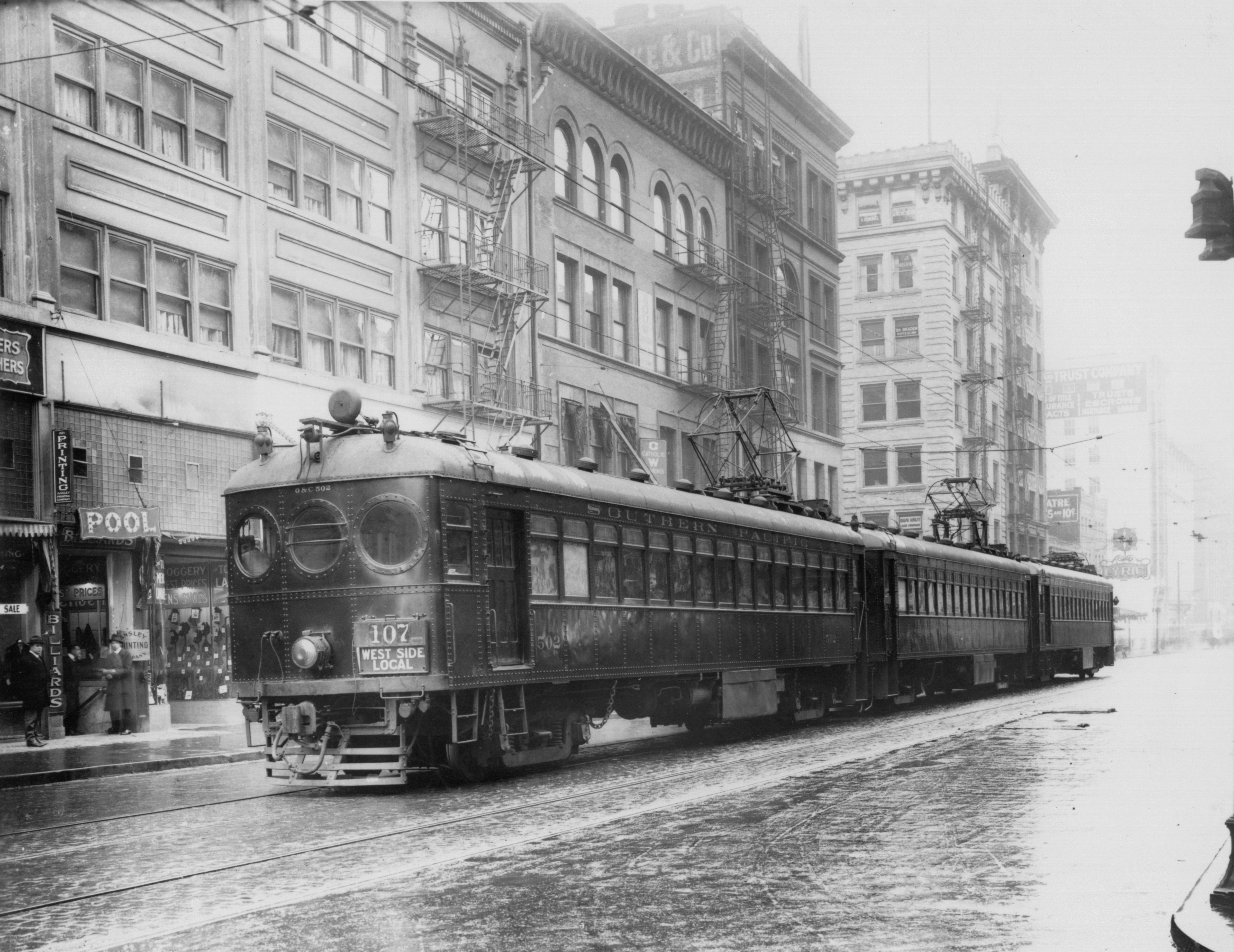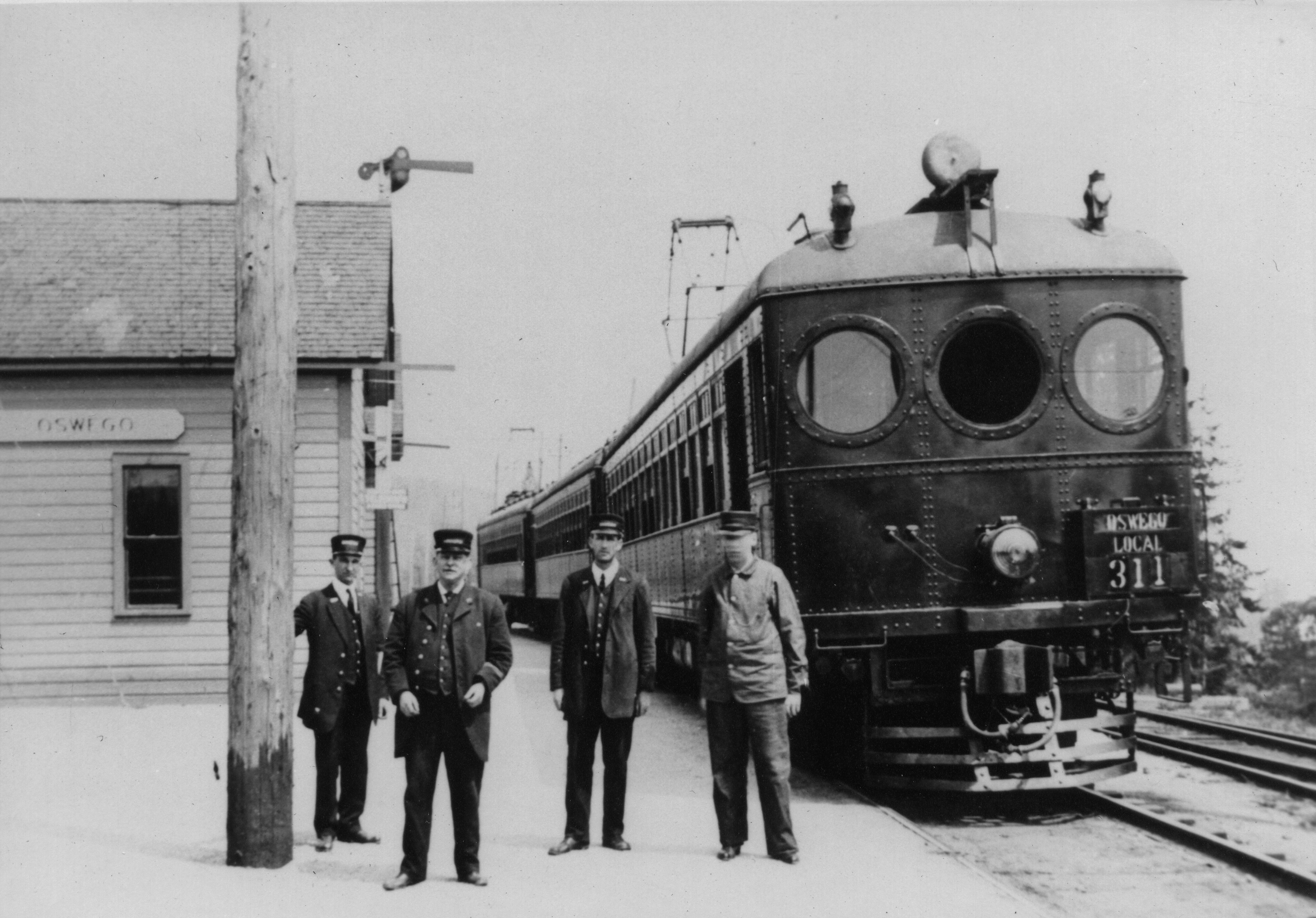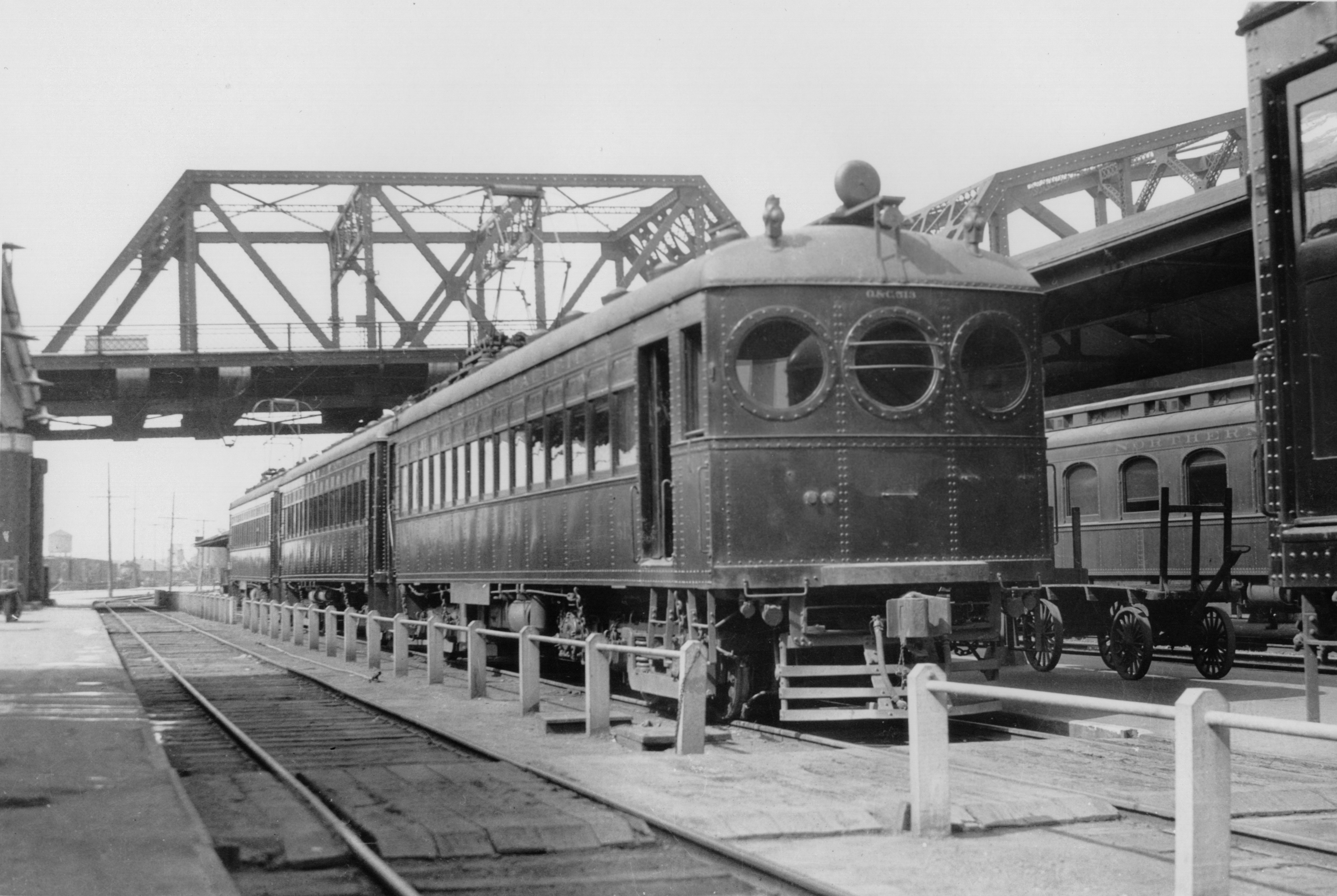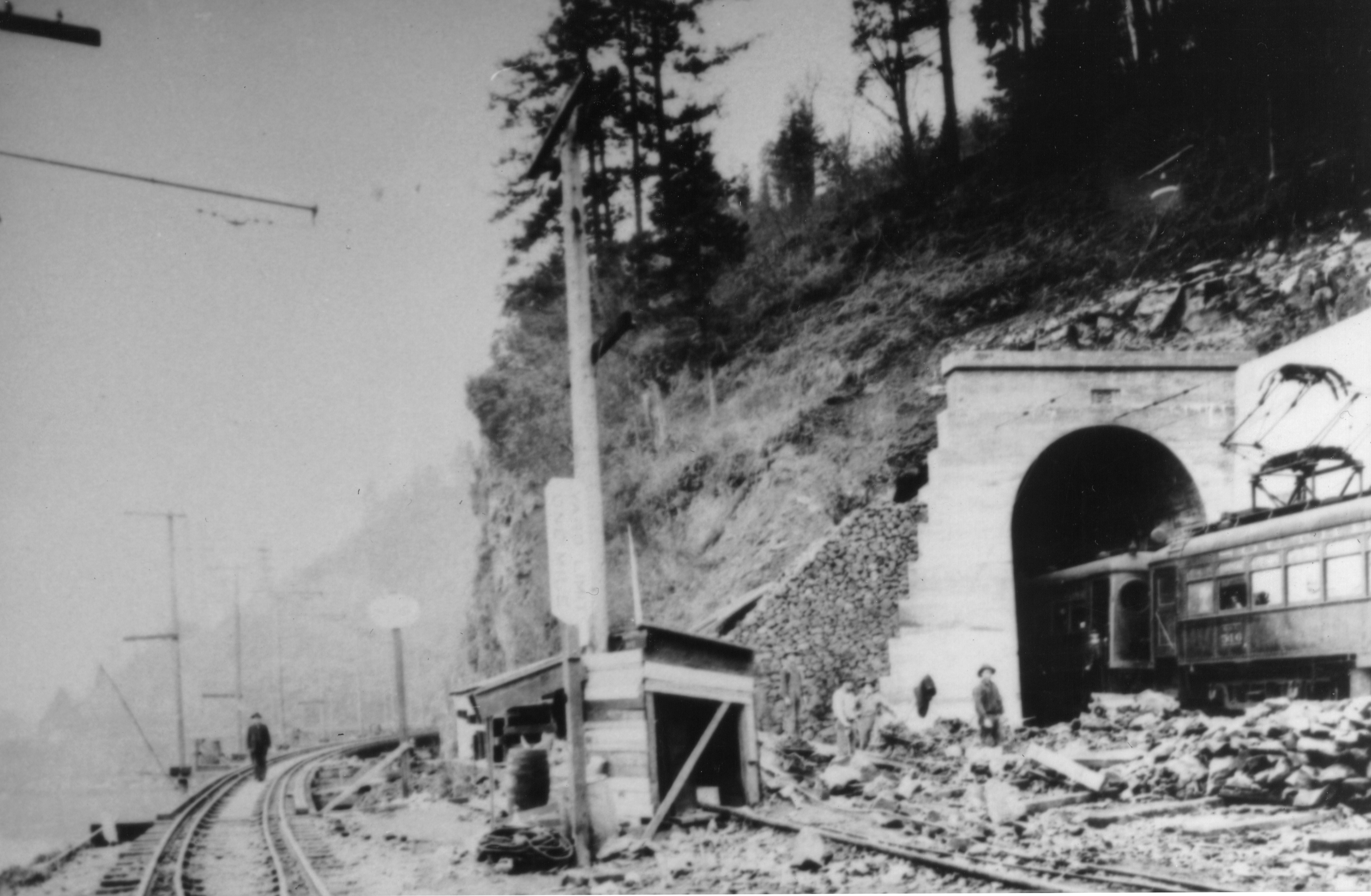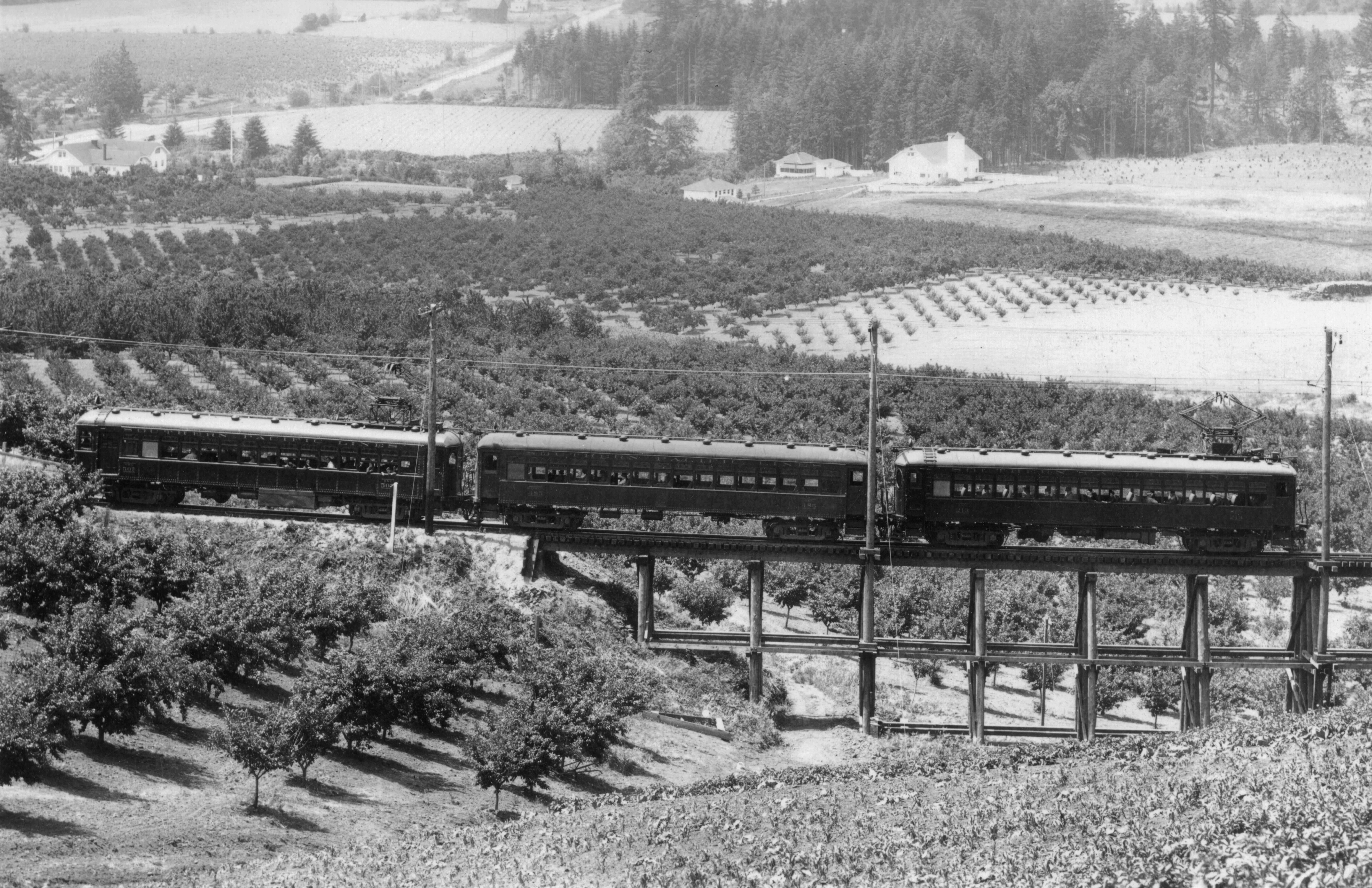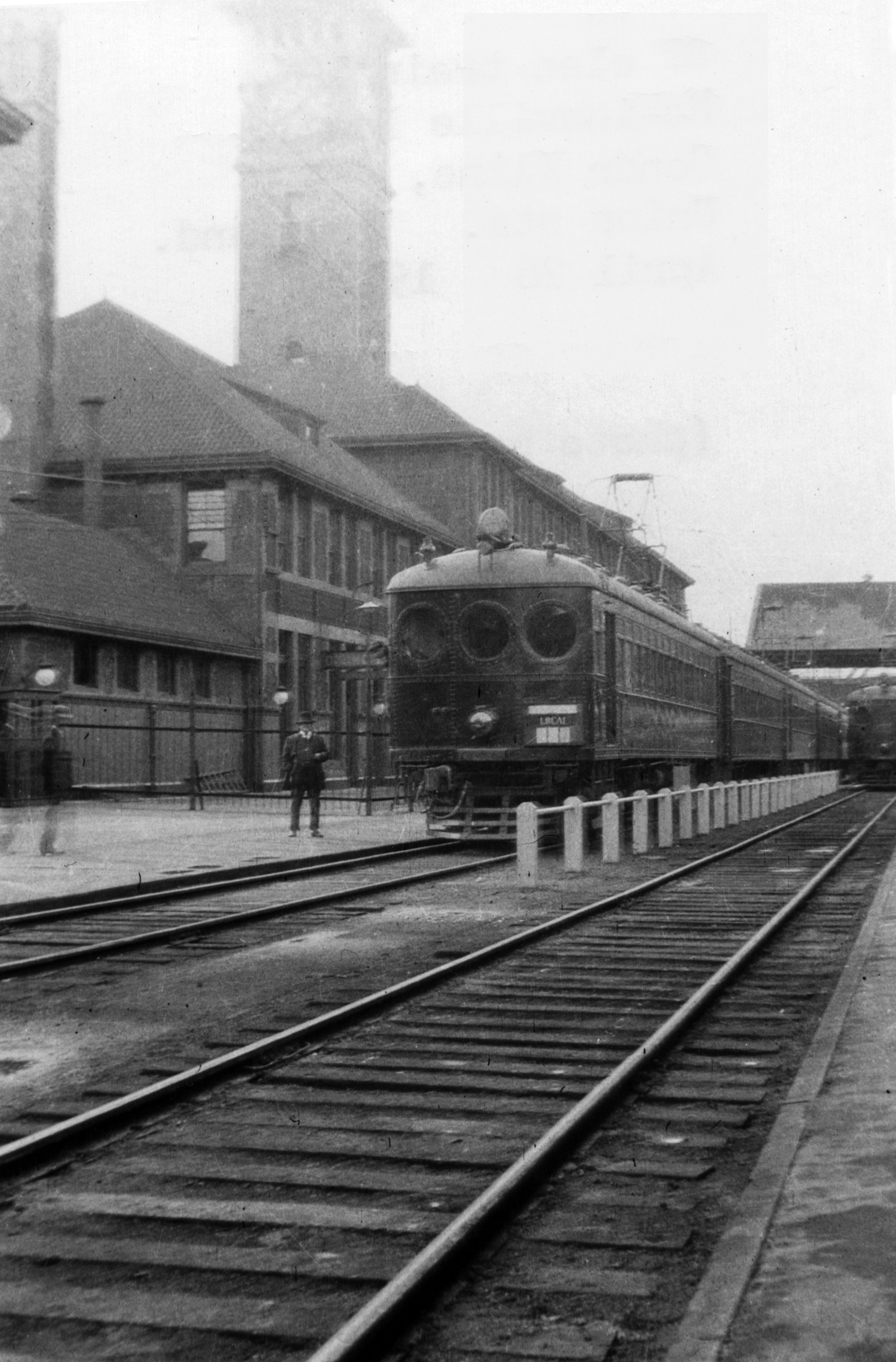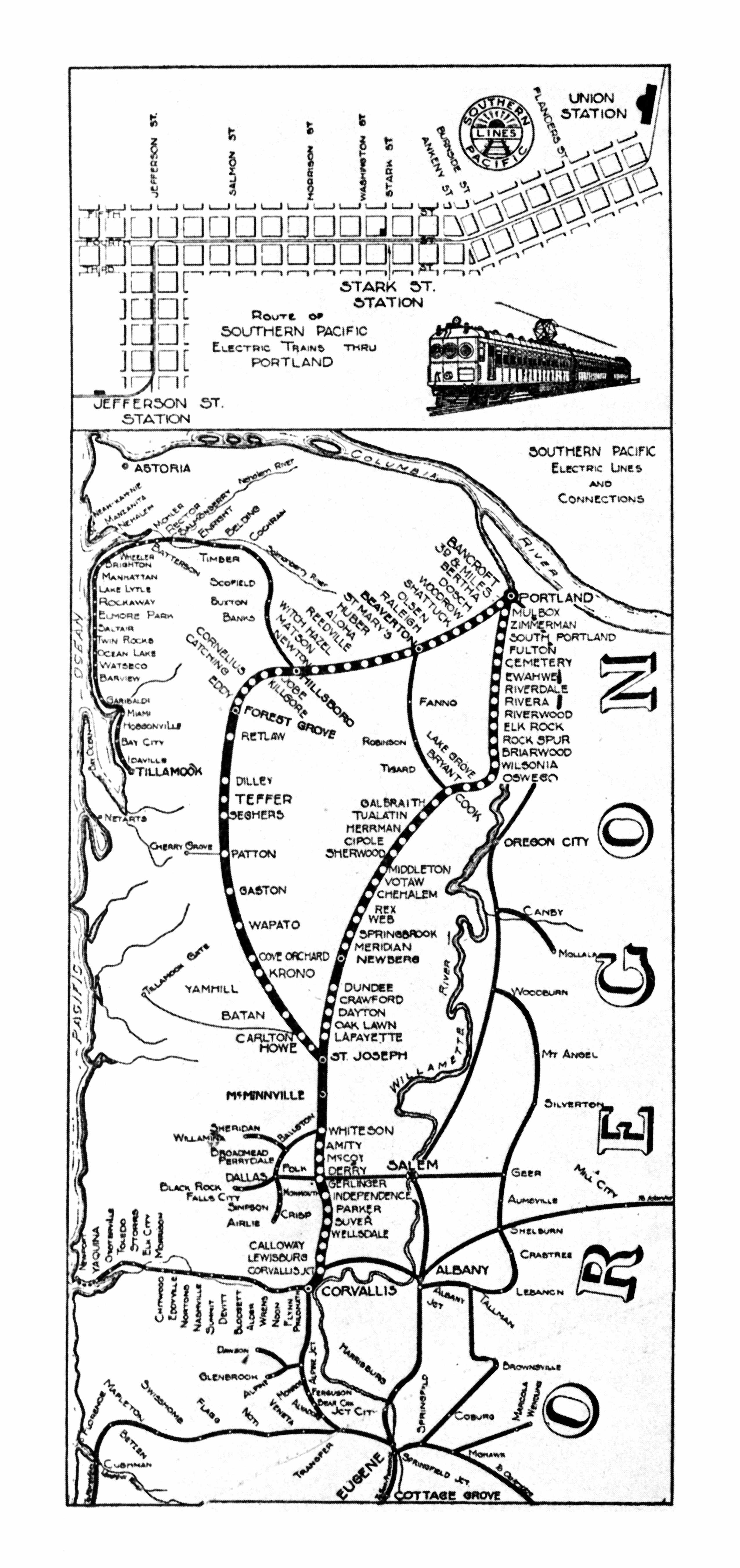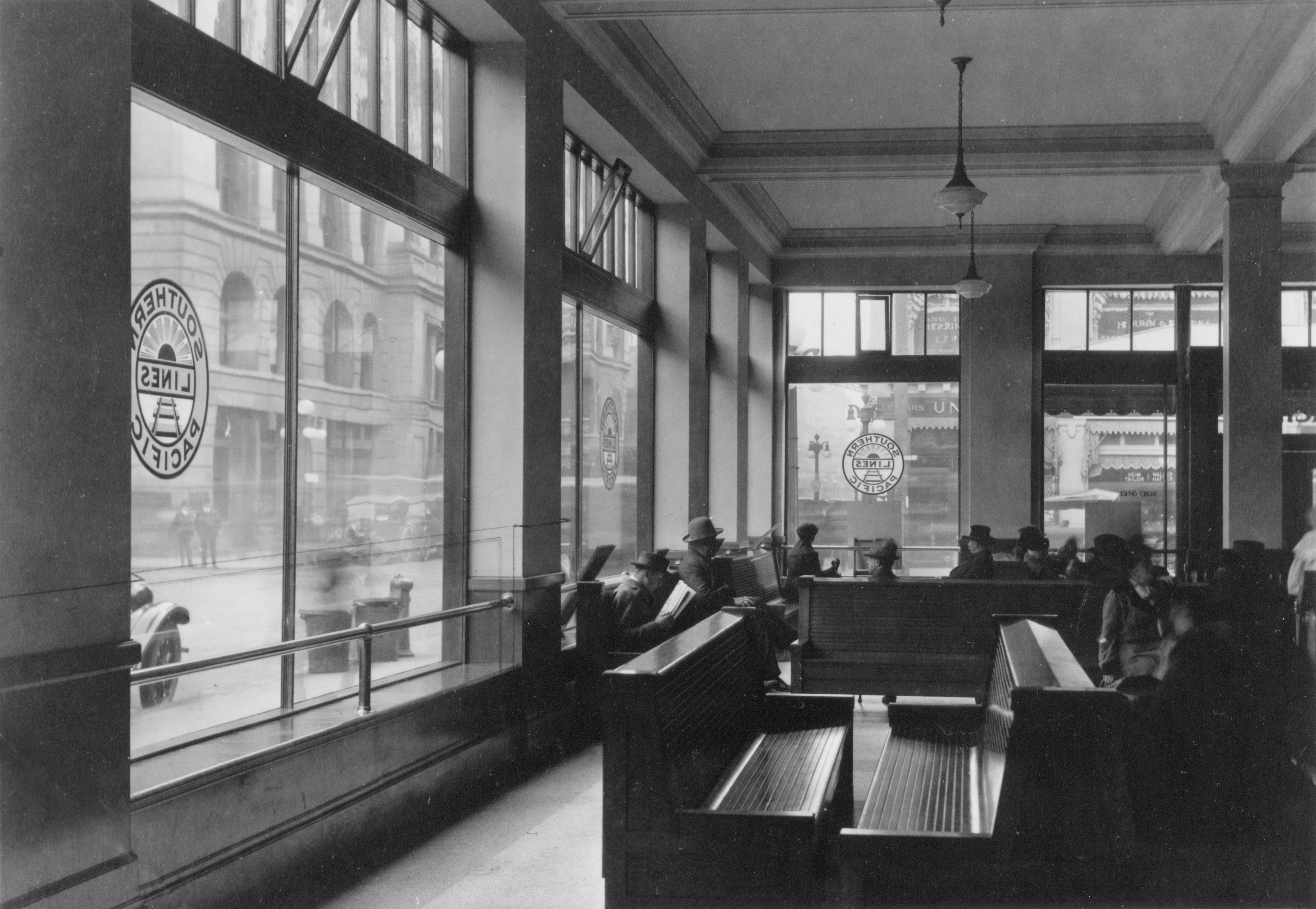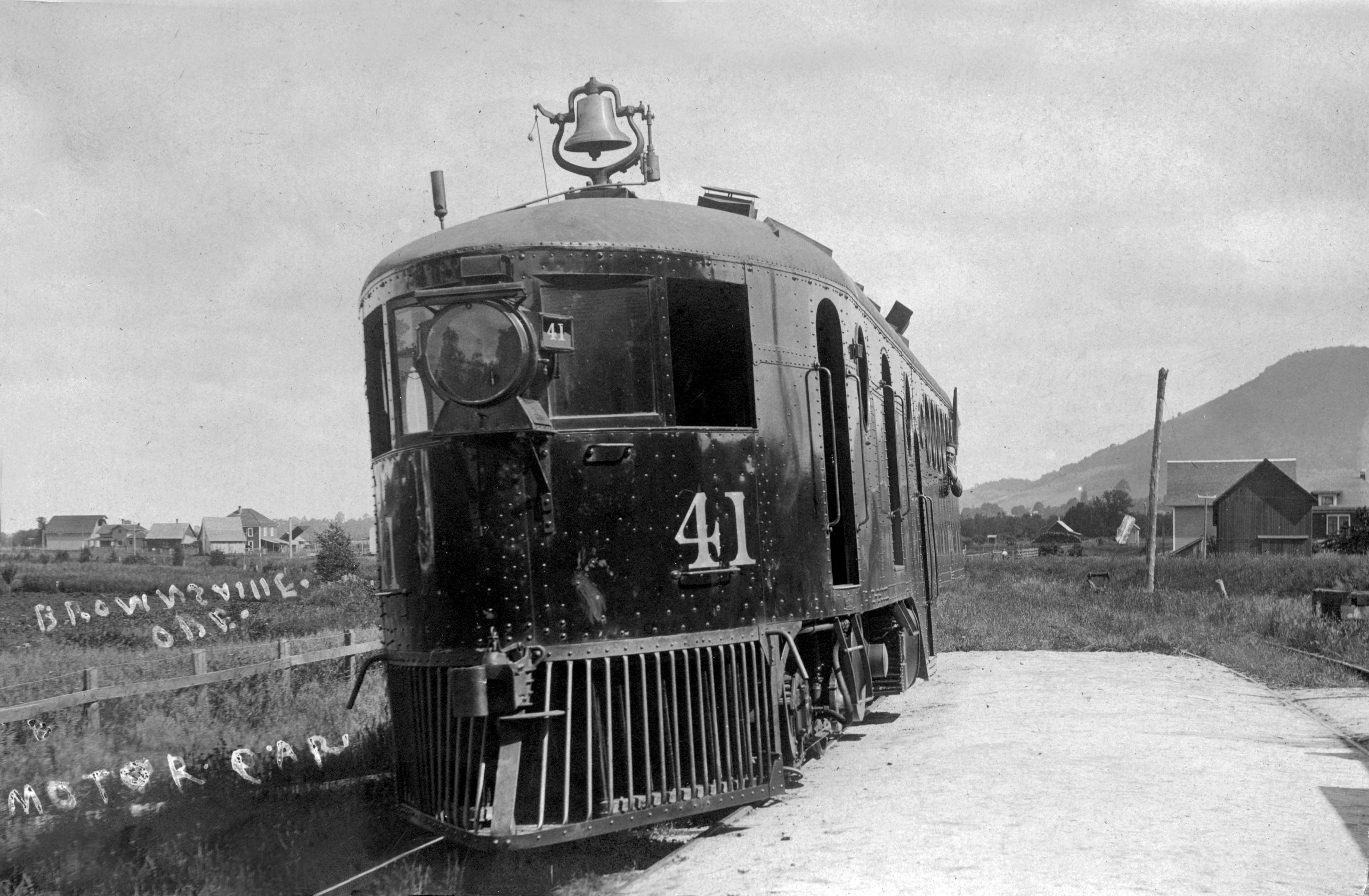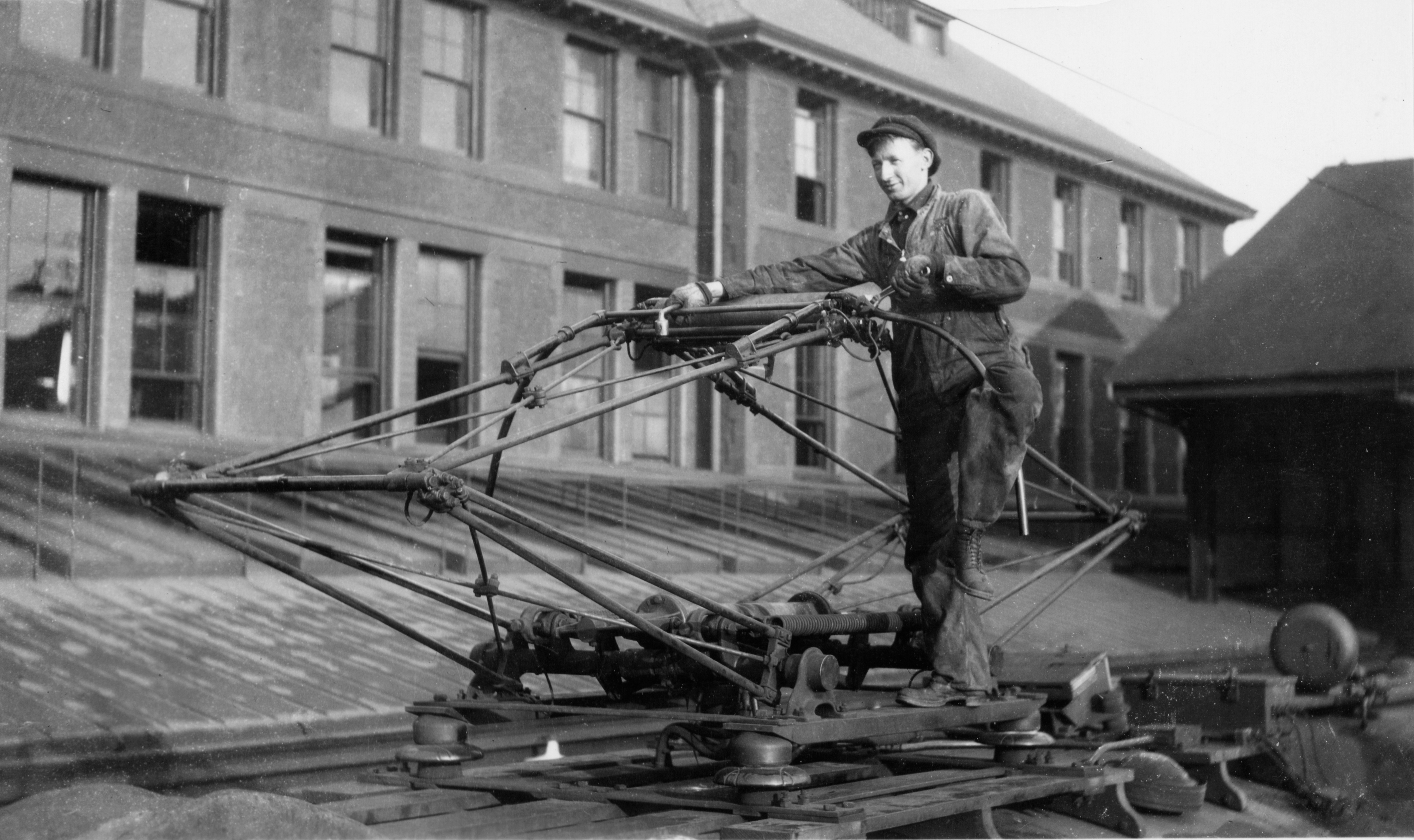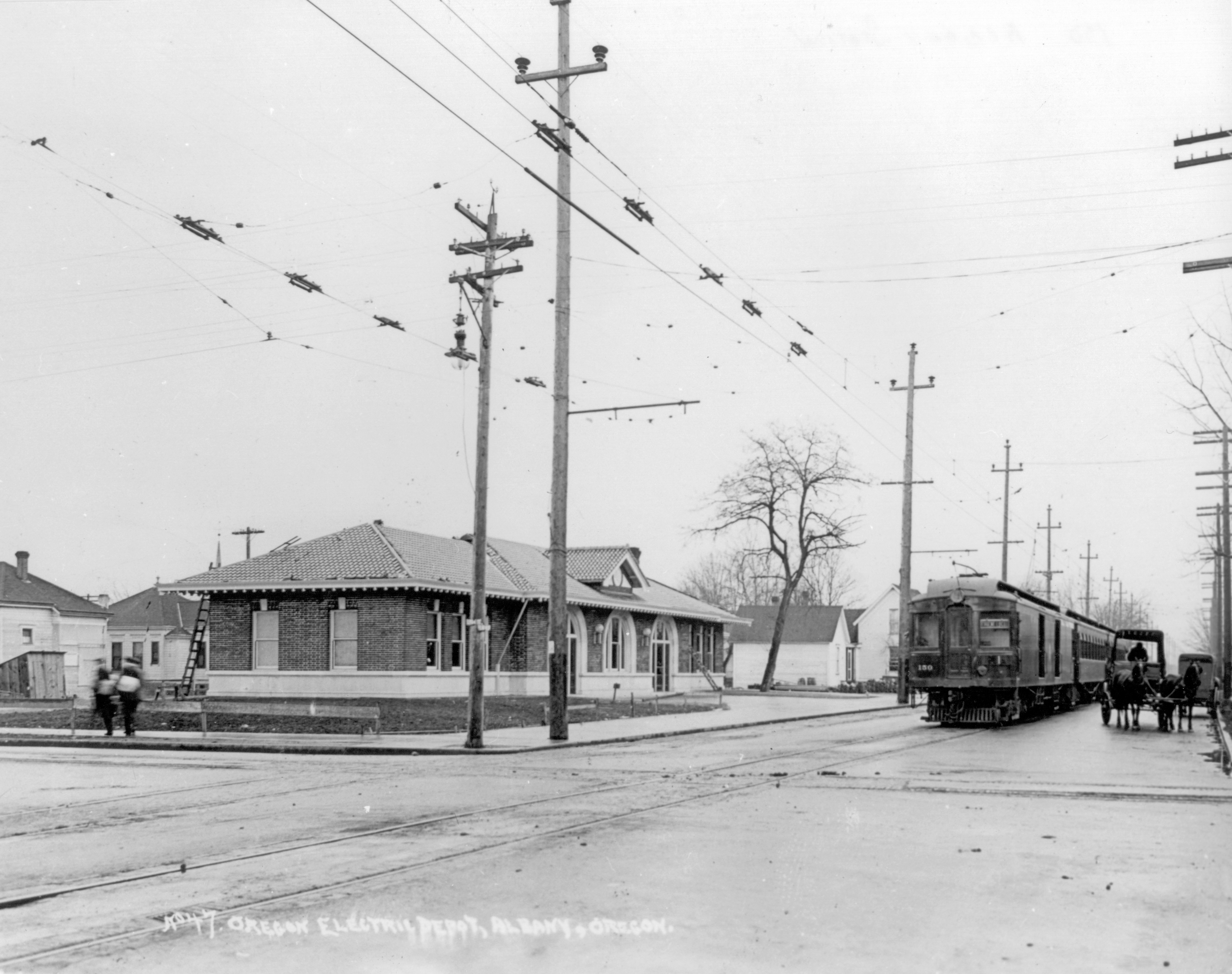Oregon gained a distinction in 1912 when the Southern Pacific Railroad became one of the few railroads in the nation to convert branch steam railroad lines into an electric interurban network. Growing competition from the Oregon Electric Railway provided motivation, as did successful experience with electric railroad operation in California. At the time, the Southern Pacific, one of the largest railroads in the West, owned most of the railroads in Oregon.
Initial efforts were undertaken by the newly acquired Portland, Eugene and Eastern Railway (PE&E), which owned city streetcar systems in Salem, Albany, and Eugene and had been arranging franchises for a planned electric line between those cities and Portland. The Southern Pacific added its Westside and Yamhill branches to the PE&E and began construction of an electric railway.
The PE&E began electric interurban service on January 17, 1914, using two routes: the Westside line, parts of which dated to 1871, went by way of Beaverton, Hillsboro, and Forest Grove; and the Eastside line, which ran through Oswego, Tualatin, and Newberg. These lines joined north of McMinnville at St. Joseph, creating a 109-mile circle known as the Yamhill Loop. During the first year, the PE&E mainline was extended south of McMinnville to Whiteson.
In 1915, the Southern Pacific dropped the PE&E name and replaced it with Southern Pacific Lines. The Oregon interurban railway was also known as the Red Electric Lines because of the color of its cars. Their bright red livery was similar to that used by the railroad’s Pacific Electric streetcars in Los Angeles.
On June 17, 1917, electric rail service was completed through the Willamette Valley to Corvallis, eighty-eight miles south of Portland. A planned extension to Eugene was not built, and Corvallis became the southern terminus for the Red Electrics. The Southern Pacific was running sixty-four Red Electric trains a day by the 1920s. Four trains went to Corvallis and two to Whiteson. One- or two-car commuter trains offered frequent service closer to Portland.
The new all-steel Pullman-built Red Electric interurbans ran on 1,500 volts DC and used pantographs instead of trolley poles, like their Sacramento Northern Railway cousins in Northern California, but the large porthole-like windows at each end were a distinctive Oregon feature. Although the Southern Pacific’s red cars were not as elegantly appointed as the Oregon Electric Railway’s classic parlor cars, they were modern looking and fast.
Expenses increased throughout the 1920s, as better roads and affordable automobiles reduced ridership, and as population growth in the rural Willamette Valley lagged behind expectations. Labor and franchise difficulties also plagued the Southern Pacific. Union crew requirements remained inflexible, and the City of Portland was constantly pressuring the railroad to remove its tracks from Southwest Fourth Street.
The Red Electric system was one of the last interurban railways built and one of the first to be abandoned. When passenger train service was discontinued on October 5, 1929, the Southern Pacific's Oregon interurban railway was only fifteen years old.
-
![Red Electric Wells Fargo Express on its way to Whiteson, 1915.]()
Red Elec, Wells Fargo Express, Whiteson, 1915.
Red Electric Wells Fargo Express on its way to Whiteson, 1915. Courtesy Richard Thompson
-
![Red Electric train at Newberg, 1918.]()
Red Elec, Newberg, 1918.
Red Electric train at Newberg, 1918. Courtesy Mark Moore
-
![Red Electric west side line train at Forest Grove, about 1915.]()
Red Elec, Forest Grove, ca 1915.
Red Electric west side line train at Forest Grove, about 1915. Courtesy Richard Thompson
-
![Hostler Gene Moell and assistant move Red Electric car 207 at Portland's Union Station, 1918.]()
Red Elec, car 207, Union Station, Portland, 1918.
Hostler Gene Moell and assistant move Red Electric car 207 at Portland's Union Station, 1918. Courtesy Richard Thompson
-
![Red Electric collision at Bertha caused eight deaths and was worst accident in Oregon interurban history, May 19, 1920.]()
Red Elec, accident, Bertha, May 19 1920.
Red Electric collision at Bertha caused eight deaths and was worst accident in Oregon interurban history, May 19, 1920. Courtesy Richard Thompson
-
![Red Electric motor 502 at Southern Pacific ticket office, SW 4th, Portland, 1920.]()
Red Elec, motor 502, Portland, 1920.
Red Electric motor 502 at Southern Pacific ticket office, SW 4th, Portland, 1920. Courtesy Mark Moore
-
![Red Electric Oswego local at Oswego Station, about 1920.]()
Red Elec, Oswego Station, ca 1920.
Red Electric Oswego local at Oswego Station, about 1920. Courtesy Richard Thompson
-
![Red Electric combine 53 at Union Station, Portland, 1923.]()
Red Elec, combine 513, Union Station, Portland, 1923.
Red Electric combine 53 at Union Station, Portland, 1923. Courtesy Warren Wing
-
![Red Electric train through lk Rock Tunnel near Oswego, 1921.]()
Red Elec, Elk Rock Tunnel, 1921.
Red Electric train through lk Rock Tunnel near Oswego, 1921. Courtesy Richard Thompson
-
![Standard three-car Red Elec train near Rex, 1925]()
Red Elec near Rex, 1925.
Standard three-car Red Elec train near Rex, 1925 Courtesy Richard Thompson
-
![Red Electric Conductor Cline checks watch at Portland's Union Station, 1914.]()
Red Elec, Cline, Union Station, Portland, 1914.
Red Electric Conductor Cline checks watch at Portland's Union Station, 1914. Courtesy Mark Moore
-
![Red Electric route map, 1926.]()
Red Elec, route map, 1926.
Red Electric route map, 1926. Courtesy Richard Thompson
-
![Southern Pacific ticket office, SW 4th and Stark Sts., Portland, 1921.]()
Southern Pacific ticket ofc, Portland, 1921, OrHi 88776.
Southern Pacific ticket office, SW 4th and Stark Sts., Portland, 1921. Oreg. Hist. Soc. Research Libr., OrHi 88776
-
![Red Electric gasoline-powered "Doodlebugs" served Willamette Valley before interurbans.]()
Red Elec, Doodlebugs.
Red Electric gasoline-powered "Doodlebugs" served Willamette Valley before interurbans. Courtesy Richard Thompson
-
![Pantograph atop Red Electric train.]()
Red Elec, pantograph.
Pantograph atop Red Electric train. Courtesy Richard Thompson
Related Entries
Further Reading
Dill, Tom and Walter R. Grande. The Red Electrics: Southern Pacific's Oregon Interurban. Edmonds, Wash.: Pacific Fast Mail, 1994.
Thompson, Richard. Willamette Valley Railways. S.C.: Arcadia Publishing, 2008.

